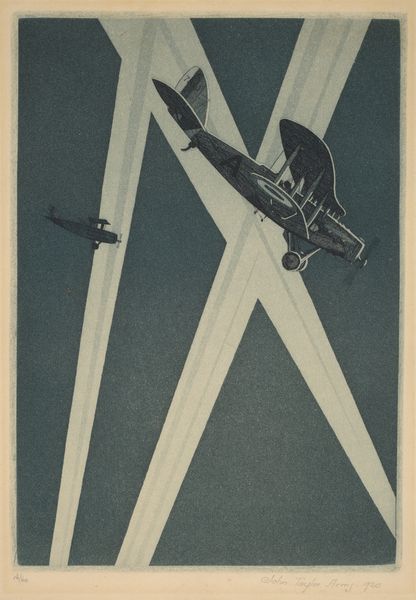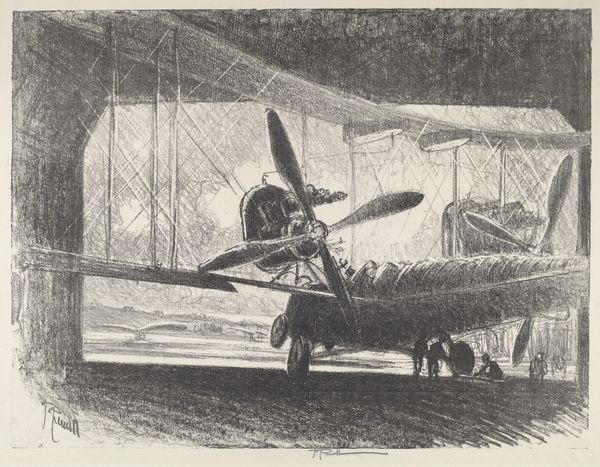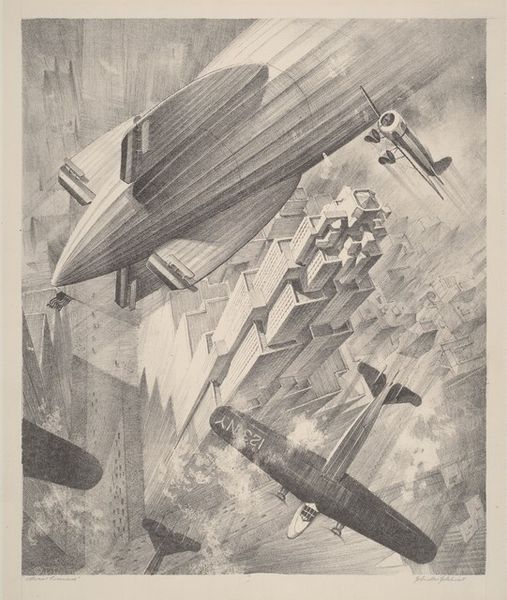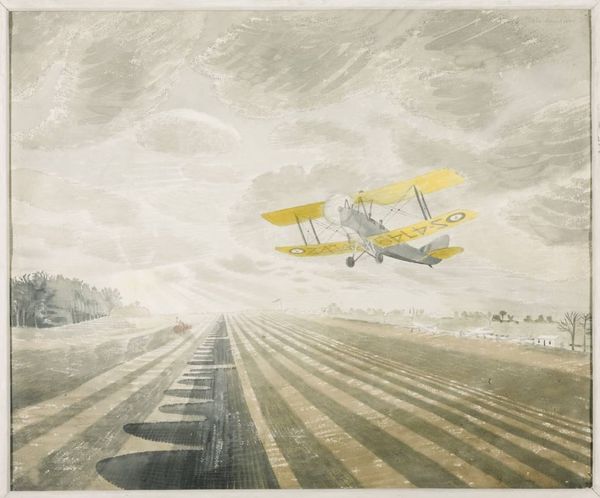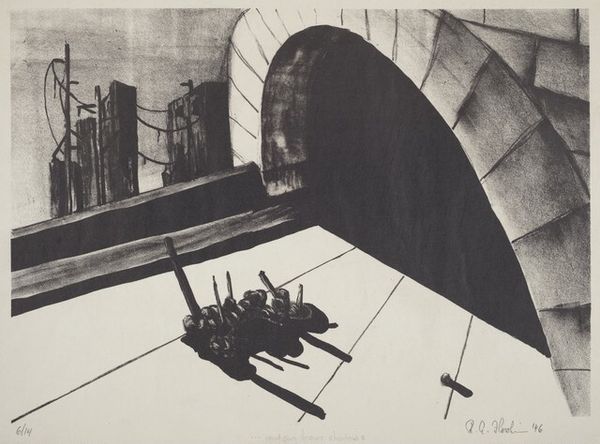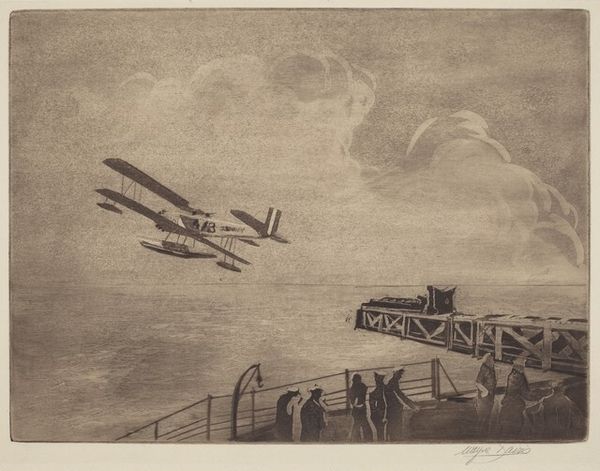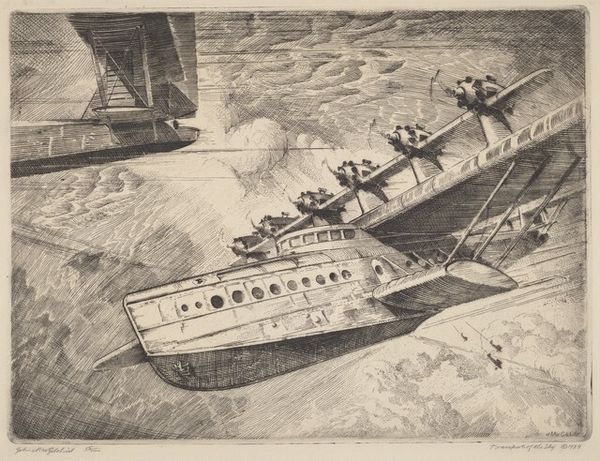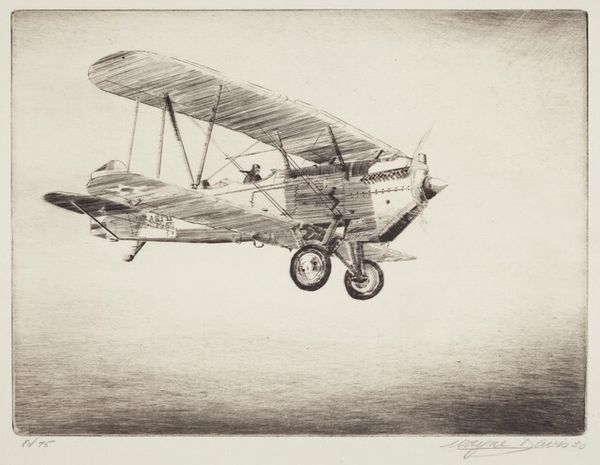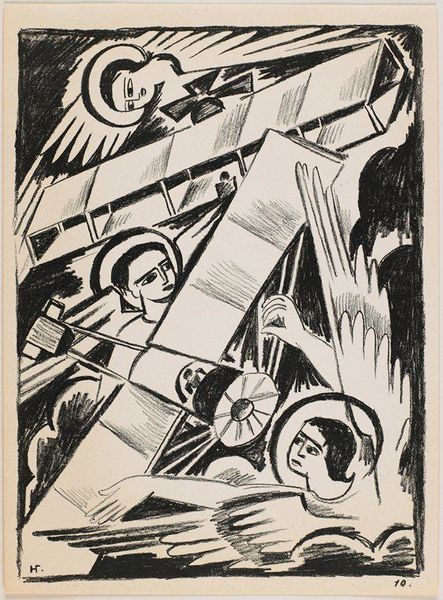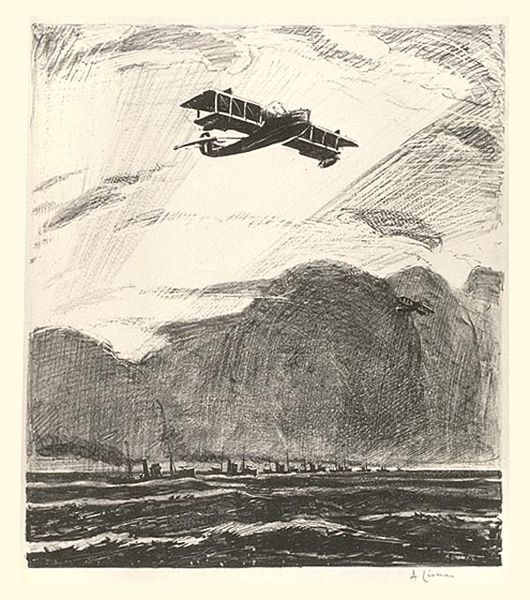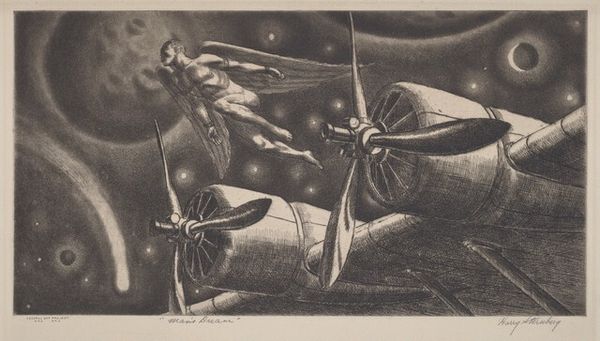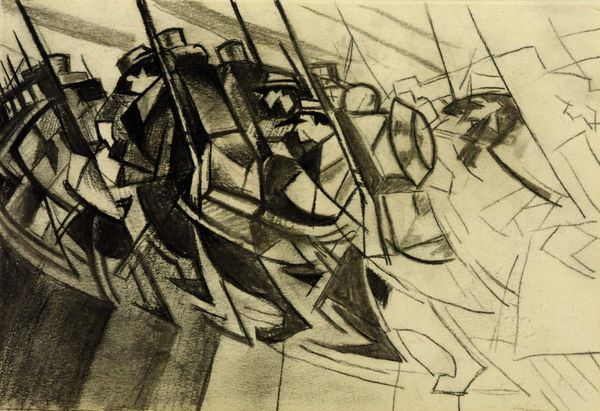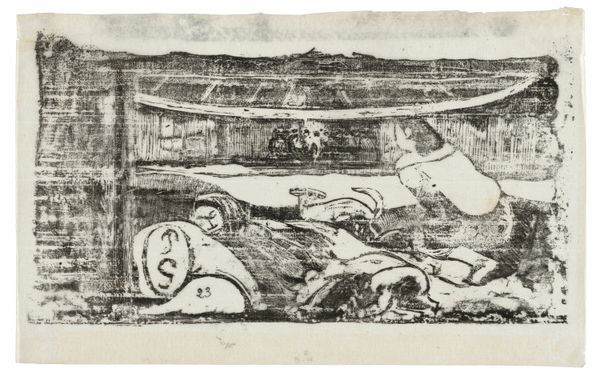
Vlucht van de Pelikaan van Amsterdam naar Batavia in 1933 Possibly 1934
0:00
0:00
jacobpietervandenbosch
Rijksmuseum
graphic-art, print, ink
#
graphic-art
# print
#
pen illustration
#
old engraving style
#
landscape
#
ink line art
#
ink
#
line
#
history-painting
Dimensions: height 252 mm, width 402 mm
Copyright: Rijks Museum: Open Domain
Curator: This compelling graphic art piece, likely dating to 1934, commemorates the "Vlucht van de Pelikaan van Amsterdam naar Batavia in 1933," or "Flight of the Pelican from Amsterdam to Batavia in 1933." It’s held in the Rijksmuseum, and created by Jacob Pieter van den Bosch. Editor: My initial impression is the starkness of the high contrast between the ink and paper; the dramatic diagonal thrust of the aircraft cutting across the earth map adds a real dynamism to this monochrome print. Curator: Absolutely. Thinking about the materials involved: ink, paper, the printing process...these were all part of the early graphic design industry focused on speed and efficiency, mirroring the aviation industry itself. Note how the labor-intensive process reflects a society increasingly captivated by machine production and global reach. Editor: I find it really interesting how this artwork can be contextualized within broader narratives of Dutch colonialism. The flight path symbolized progress for some, but simultaneously highlighted the exploitation of resources and people in colonized territories, right? What do you think about how race, politics, and commerce intersect here? Curator: I would note also that even the style - bold lines, almost woodcut-like appearance - serves to convey a sense of speed, the immediacy of the news, and technological advancements that were shaping perceptions of time and distance, collapsing them in real-time for those back home following the headlines. The very materiality mirrors progress. Editor: I agree, and focusing on those elements of progress reminds me to continue scrutinizing art like this for how the representation of certain bodies may be elevated at the expense of suppressing others and to unpack any lingering Eurocentric perspectives the print may present. It becomes important to question and unpack art objects in this way. Curator: That questioning is definitely critical for an open-ended experience, rather than a passively absorbed one, to encourage everyone's critical thought about the intersections between progress, privilege and power that become clear through a focused encounter like the one you highlight. Editor: Agreed. Hopefully, this discussion encourages visitors to explore these facets of the work to help promote thoughtful conversations around globalization, technological progress, and its complex sociopolitical legacy.
Comments
No comments
Be the first to comment and join the conversation on the ultimate creative platform.
